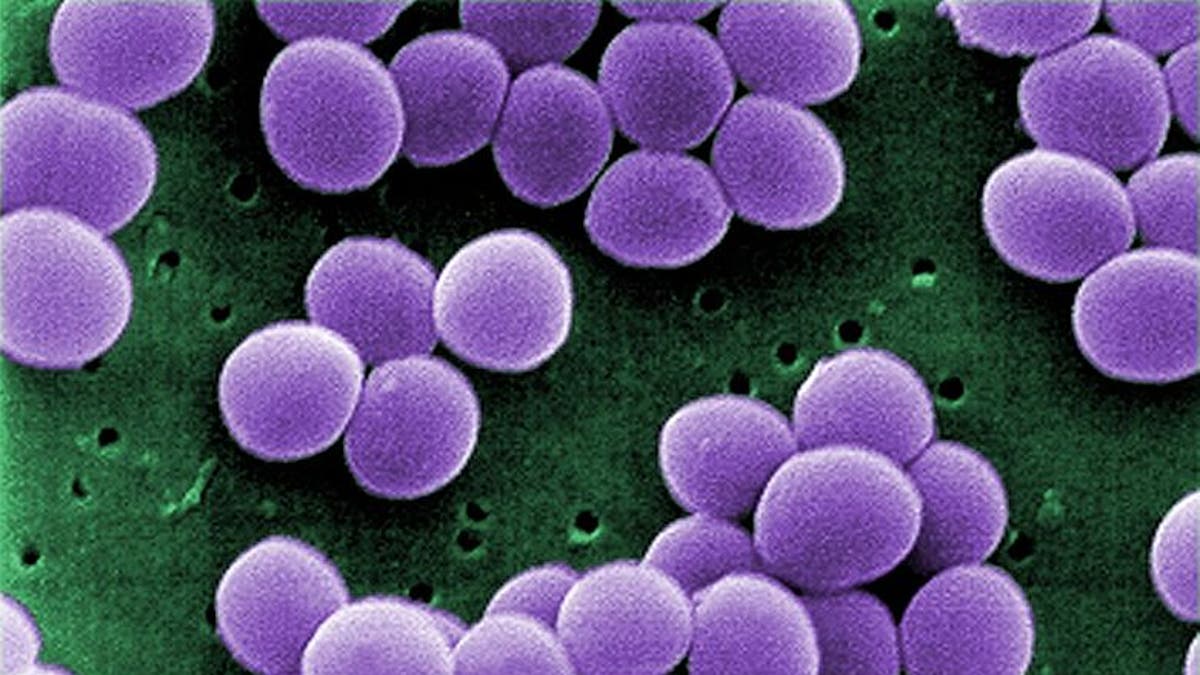
Recently you may have seen the term MRSA in the news and have wondered what it is. MRSA is an acronym for methicillin-resistant Staphylococcus aureus, a strain of common bacteria that is resistant to antibiotics. Methicillin, an antibiotic of the penicillin class, was formerly used to treat staph infections but is now only used in laboratories to identify antibiotic-resistant strains of staph infection.
Staphylococcus aureus is found in healthy people, typically on the skin or in nasal passages. Approximately 25 percent to 30 percent of people have some staph bacteria in the nose. For the most part, staph bacteria cause no problems. But about one in 50 people carries MRSA, a strain of staph that is antibiotic-resistant. If such staph bacteria enters a cut, sore, or an area that has been chaffed, such as the entry for a catheter, it can cause infection. And the infection can be serious or even fatal.
Hospitals tend to have the highest concentrations of MRSA than anywhere else. This is because infected people go to hospitals for treatment, many people are crowded into hospitals, the buildings tend to be warm, there are many invasive procedures, body fluids are commonly spilled, and infection is rapid. Those who visit people in hospitals are at risk since MRSA is easy to catch. But other people who do not visit hospitals can also get MRSA, including those who share items of personal hygiene, such as razors, wash cloths and towels, those who receive tattoos, and members of the military, who often live in close quarters with one another.
When MRSA infects skin, a swollen, red area develops, and it is usually painful. MRSA skin infections may develop pus or weep other fluids. If left untreated, a MRSA skin infection can go progressively deeper into the body, infecting blood and organs. Symptoms of MRSA infection can include chills, cough, chest pain, fever, fatigue, muscle aches, rashes, shortness of breath and a general feeling of malaise. The worst and final symptom of progressed MRSA infection is death.
MRSA infections may require surgical intervention and treatment with antibiotics. The problem is that over time, these cagey bacteria have become resistant to almost every single antibiotic available. Reasons for this include the ability of the bacteria to mutate, as well as the gross overuse of antibiotics in meat and dairy production. When we consume meat or dairy products from animals raised on a steady diet of antibiotics, we consume plasmids – little bits of genetic material that carry antibiotic resistance. Then, when we get an infection, the antibiotics don’t work.
Recently, researchers have been exploring the bacterial riches of the ancient Lechuguilla cave in New Mexico, which contains vast amounts of naturally antibiotic-resistant bacteria. In fact, the bacteria in the cave, which have not been exposed to any antibiotics, appear resistant to virtually every antibiotic known. The scientists are hoping that by studying these germs, they may find clues to dealing with MRSA.
A handful of drugs currently show activity against MRSA. These include older drugs such as Vancomycin, teicoplanin and fosfomycin, and new MRSA-active antibiotics including quinupristin/dalfopristin, linezolid and daptomycin. The most widely used of these is Vancomycin, which is known as a glycopeptide antibiotic. Taken orally, Vancomycin only works in the intestines to control infection there. For other areas of infection, Vancomycin must be taken via injection. The drug is a rough ride. Symptoms of Vancomycin can include nausea, dizziness, feeling cold, flushing, pain, muscle spasms, bruising, the development of a rash, ringing in the ears, hearing difficulties, and breathing problems.
Are there natural agents that might help with MRSA? There is some evidence that Amazon bee propolis can be useful in topical cases, though there is no known use of this for internal purposes. Garlic demonstrates anti-MRSA activity, as does oil of Oregano. Otherwise more research is needed in this area. Around the world, researchers are scrambling to find other agents that may act against MRSA, to head off an epidemic.
MRSA infections are greatly on the increase, and this has health officials worried. A large outbreak of MRSA has the potential to turn into a pandemic, infecting and killing huge numbers of people. If you suspect that you have an infected area, a sore, cut or pimple that is red and swollen and hurts, you would be smart to see a doctor. MRSA infection is a real concern, especially considering that the infection can be fatal. Remember, life is hazardous. Stay alert, and stay alive.
Chris Kilham is a medicine hunter who researches natural remedies all over the world, from the Amazon to Siberia. He teaches ethnobotany at the University of Massachusetts Amherst, where he is Explorer In Residence. Chris advises herbal, cosmetic and pharmaceutical companies and is a regular guest on radio and TV programs worldwide. Chris is the author of 14 books, including Hot Plants, Tales from the Medicine Trail, Kava: Medicine Hunting in Paradise, The Whole Food Bible, Psyche Delicacies, and the international best-selling yoga book, The Five Tibetans. Richard Branson features Chris in his new book, Screw Business as Usual. His field research is largely sponsored by Naturex of Avignon, France. Read more at www.MedicineHunter.com.




















